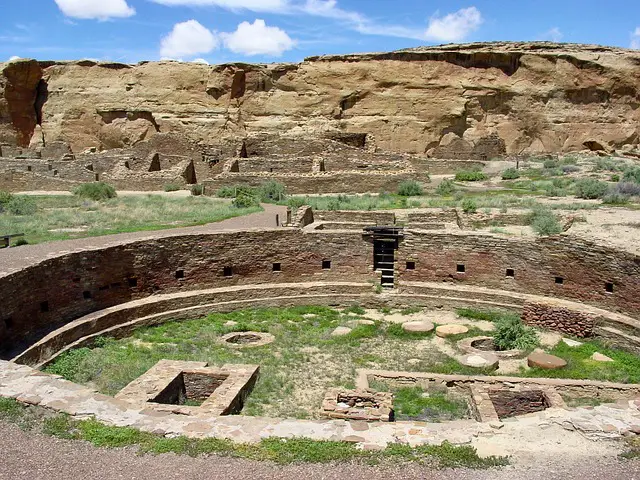Anasazi Indians *Ancestral Puebloans
The Ancestral Puebloans, or Anasazi Indians, were an ancient Native American culture that inhabited the present-day Four Corners region of the United States from approximately 1 CE to 1300 CE .

The term Anasazi comes from the Navajo word for ancient people (often mistakenly interpreted as ancient enemies).
In modern times, the term has come to refer to both the ancestral Puebloans and the archaeological culture they left behind.

How did the Anasazi come to Occupy This Region? What was their History?
The Anasazi people were an ancient Native American culture, the term Anasazi (pronounced ah-nah-SAH-zee) is Navajo for ancient people.
The Anasazi tribe were an ancient Native American culture that were located in the regions comprising of
- Southeastern Utah
- Northeastern Arizona
- Northwestern New Mexico
- Southwestern Colorado
The people built one of North America’s most extensive archaeological sites at Chaco Canyon in New Mexico. Their culture spanned from around A.D. 1 to 1300s.

The Anasazi were known for their
- Architecture
- Pottery
- Basketry

They had a large impact on the area they lived in, as they developed farming techniques and irrigation systems that were essential to their survival.
One of the most famous examples of their architecture is Chaco Canyon in New Mexico.
It’s an archeological site with masonry ruins and petroglyphs which provide evidence of habitation from approximately 850 AD to 1250 AD.
Their pottery was very intricate, colorful, and well-crafted: In general, their pots are smaller than those made by other ancient cultures like the Maya or Aztecs because they used them mostly for cooking rather than storage.
Their Culture Declined in the 13th Century
The culture of the Anasazi people declined in the 13th century. Drought, earthquakes, and other natural disasters may have contributed to their decline. After 1300 the population was reduced to fewer than 10,000 people.
The surviving inhabitants relocated southward. By the time Coronado reached the area in 1540 there were no Anasazi remaining.



Today, their descendants include the Hopi, Zuni, and Acoma peoples. Some historians believe that they were descendants of Mesoamerican settlers who traveled northward from Mexico.
Their descendants include the Hopi, Zuni, and Acoma peoples.
- Anasazi Indians *Ancestral Puebloans
- 18th Century America
- 19th Century America
- 20th Century America
- 21st Century America
- About Us
- African American History
- American Celebrations
- American Civil War
- American Flag
- American History – Home
- American History Timeline
- American Presidents
- American Religion and Cults
- American Revolution
- American Sports
- Anasazi Indians *Ancestral Puebloans
- Birth of the USA
- Contact
- Disclaimer
- Famous American Buildings
- History of TV, Film & Entertainment
- Privacy Policy
- Privacy Policy
- Shadows of Destiny: Unraveling the Controversial Legacy of Manifest Destiny
- SiteMap
- The Progressive Era
- Vietnam War
- World War 1 – WW1 1914
- World War 2 – WW2 – 1939
- Native America
- Colonial Period
- Founding Fathers of America